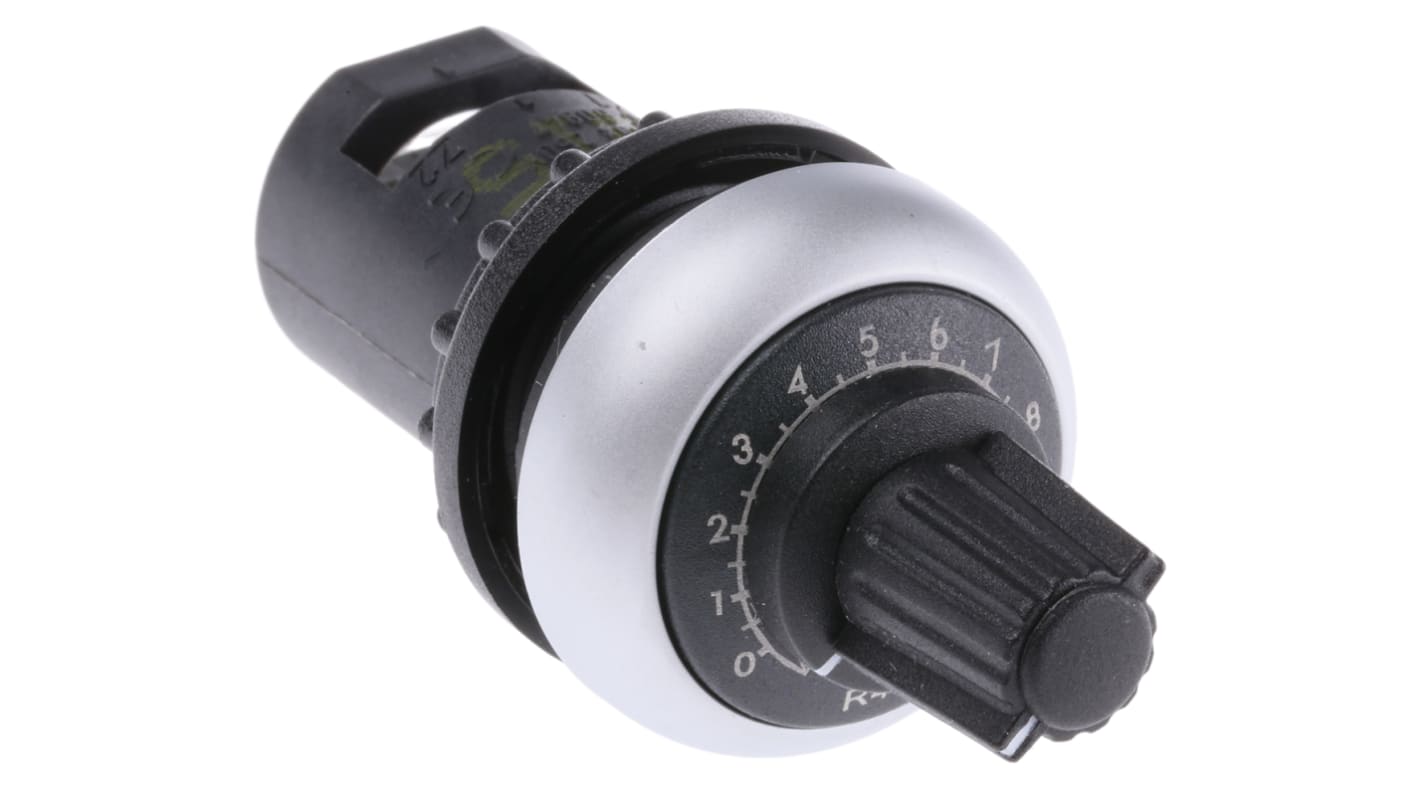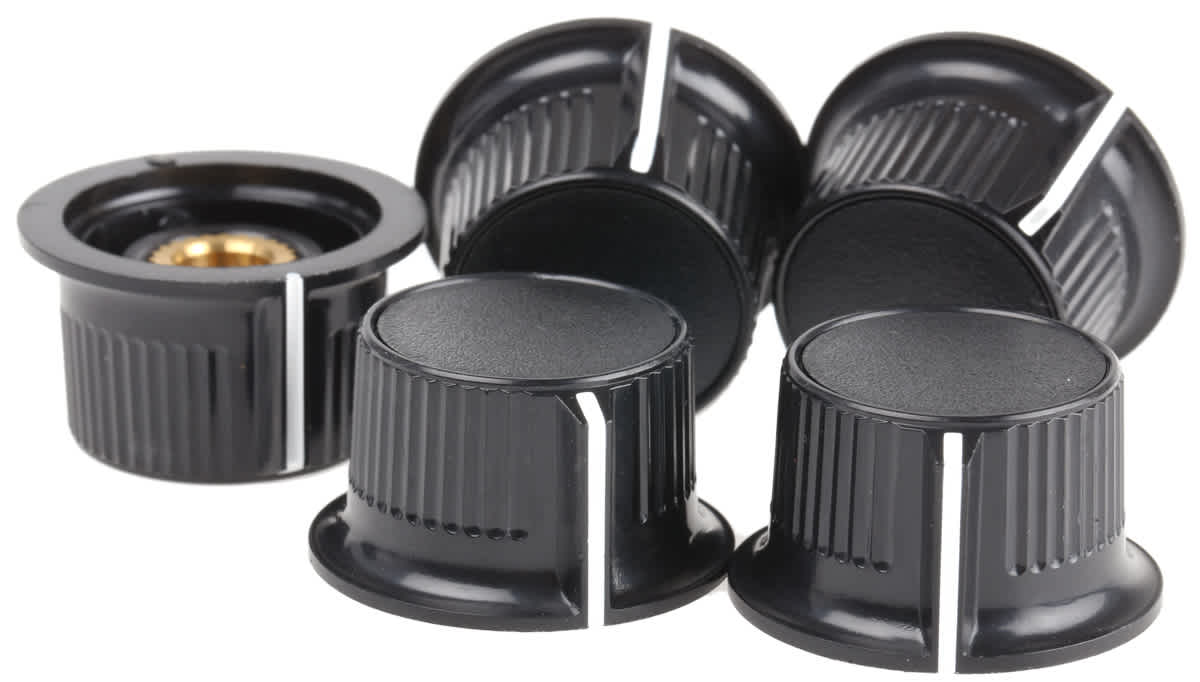Eaton RMQ-Titan 47kΩ Potentiometer Screw Terminal, 229492 M22-R47K
- RS Stock No.:
- 620-6080
- Mfr. Part No.:
- 229492 M22-R47K
- Brand:
- Eaton

Subtotal (1 unit)*
£72.99
(exc. VAT)
£87.59
(inc. VAT)
FREE delivery for orders over £50.00
In Stock
- 12 unit(s) ready to ship
- Plus 13 unit(s) ready to ship from another location
Need more? Click ‘Check delivery dates’ to find extra stock and lead times.
Units | Per unit |
|---|---|
| 1 + | £72.99 |
*price indicative
- RS Stock No.:
- 620-6080
- Mfr. Part No.:
- 229492 M22-R47K
- Brand:
- Eaton
Specifications
Technical Reference
Legislation and Compliance
Product Details
Find similar products by selecting one or more attributes.
Select all | Attribute | Value |
|---|---|---|
| Brand | Eaton | |
| Maximum Resistance | 47kΩ | |
| Number of Turns | 1 | |
| Power Rating | 0.5W | |
| Mounting Type | Screw Terminal | |
| Termination Style | Screw | |
| Shaft Length | 29.2mm | |
| Shaft Type | Circular | |
| Series | RMQ-Titan | |
| Tolerance | ±10% | |
| Select all | ||
|---|---|---|
Brand Eaton | ||
Maximum Resistance 47kΩ | ||
Number of Turns 1 | ||
Power Rating 0.5W | ||
Mounting Type Screw Terminal | ||
Termination Style Screw | ||
Shaft Length 29.2mm | ||
Shaft Type Circular | ||
Series RMQ-Titan | ||
Tolerance ±10% | ||
- COO (Country of Origin):
- MA
Eaton Potentiometers - M22 Series
Eaton’s M22 range of rotary potentiometers enable a user to regulate and change the current that flows through a circuit, these rotary potentiometers can be easily controlled by turning the adjustable spindle or knob. These potentiometers are panel mount with screw terminals for easy mounting inside control panels and other electronics.
Features & Benefits
• Screw terminals meaning this device can be installed with just a screwdriver
• Panel mounting
• Precision twist action on the rotary knob to set the value
• Features an IP66 rating, this means that the potentiometer is protected against dust that may cause harm to it, this rating also means that the potentiometer is protected against low-pressure water jets (all directions)
• 1 - 470 kOhms maximum resistance
• ±10% tolerance (linear)
• Forms part of the M22 series
• Panel mounting
• Precision twist action on the rotary knob to set the value
• Features an IP66 rating, this means that the potentiometer is protected against dust that may cause harm to it, this rating also means that the potentiometer is protected against low-pressure water jets (all directions)
• 1 - 470 kOhms maximum resistance
• ±10% tolerance (linear)
• Forms part of the M22 series
What is a Potentiometer?
A potentiometer is a variable resistor that increases or decreases the resistance in an application. Usually available as either digital or analogue, there are many different types of potentiometer but the two main types are rotary and linear.
• Linear - comes in a rectangle strip shape and can be pulled up or down for the required resistance, used a lot within sound systems for mic output or volume control.
• Rotary - the shaft is housed by a knob, you would find these on dimmer switches or speakers, and turning (usually to the right) will increase the resistance amplifying the output, whether that is light, sound or voltage.
• Linear - comes in a rectangle strip shape and can be pulled up or down for the required resistance, used a lot within sound systems for mic output or volume control.
• Rotary - the shaft is housed by a knob, you would find these on dimmer switches or speakers, and turning (usually to the right) will increase the resistance amplifying the output, whether that is light, sound or voltage.
How do Potentiometers work?
Potentiometers have two terminals that are fixed to a resistive element (the track). The resistive element is typically wire wound or made from carbon, cermet or conductive plastic. The third terminal is connected to the wiper, which is a sliding contact. As the wiper moves along the track, the resistance changes and the current flowing through the circuit changes.
Eaton RMQ Titan
Note
Eaton formerly known as Moeller
Related links
- Eaton RMQ-Titan 100kΩ Rotary Potentiometer Screw Terminal, 229493 M22-R100K
- Eaton RMQ-Titan 470kΩ Potentiometer Screw Terminal, 229494 M22-R470K
- Eaton Rotary Potentiometer 1-Gang Panel Mount, 232234 M22S-R47K
- Eaton RMQ-Titan Potentiometer, 229489 M22-R1K
- Eaton RMQ-Titan 2.2kΩ Rotary Potentiometer, 171157 M22-R2K2
- Eaton RMQ-Titan Potentiometer, 187035 M30C-FR10K
- Eaton RMQ-Titan 10kΩ Rotary Potentiometer Front Mount, 232233 M22S-R10K
- Eaton Rotary Potentiometer Screw Mount, 232235 M22S-R100K


